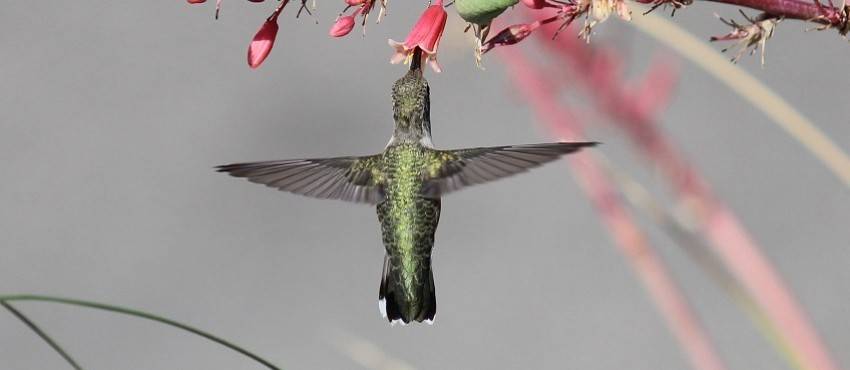
Where the Birds are…Farmington as a Birding Mecca

Some of the best spots for bird watching in the Four Corners area rest along the river valleys of the San Juan Basin in Farmington, NM. Here the Animas joins the San Juan and La Plata Rivers providing a rich area for birds to gather during their seasonal migration and to spend the winter. In the heart of Farmington, the Animas River Walk Trails provide the perfect locations for peeping more than 100 species of birds. Other local birding hot spots include Jackson Lake Wildlife Area, Cutter Reservoir, Lake Farmington, Navajo Lake State Park, Morgan Lake and B Square Ranch.
B-Square Ranch
B-Square Ranch is a 12,000-acre private wildlife refuge, working farm and ranch on the edge of the San Juan River on Hwy 64. An estimated 15,000 year-round and 100,000 wintering waterfowl nest at the ranch as do pheasant, quail, hawks, eagles, and owls and many other creatures wild and domesticated. Visitors are welcome, but you must call ahead to enter the Ranch. 505-325-4275. It is closed on Sundays and Holidays. www.bolackmuseum.com
Lake Farmington
Lake Farmington is a popular recreation area within the city of Farmington. Best known for fishing, The Beach, mountain biking, horseback riding and camping this inner city oasis offers bird and wildlife watchers an unexpected suprise. Eagle, hawk, geese, heron, osprey, jays, dove, bluebird, woodpecker and mallard are among the many species found here. Deer, fox and coyotes are also found in the area.
Navajo Lake State Park
Navajo Lake State Park is best known for boating and fishing. Locals and avid birders know that the lake as well as the river within the park provide exceptional bird watching opportunities year round. Eagle, hawk, heron, quail, pheasant, swallows, oriole, owls, osprey, vulture and sandpiper are among the many species found in the park.
Riverside Nature Center
The Riverside Nature Center along the Animas River in Farmington was designed to replicate wetlands, which once existed along the Animas River. The Nature Center wetlands now are a refuge for wildlife and provide visitors a unique viewing opportunity from the Nature Center itself and specific points on the trails nearby. It is a wonderful secret hideaway in Animas Park. The Nature Center offers two hour Tuesday Bird Walks that cover about two miles, beginning at 8:00 a.m. April through September and at 9:00 a.m. October through March.The Nature Center also offers "Brown Bag Birding" every Thursday at noon. You are invited to bring lunch to eat in the observation room of the Nature Center and enjoy the birds.
Local Birding Resources
The Riverside Nature Center has a small guide to the most common plants and animals of the park, including insects, trees, birds, mammals, and more. It sells for $10 at the Nature Center and the Farmington Museum stores. This is also the organizing site for the annual Audobon Christmas Bird Count every December. Birders meet in Farmington to conduct an annual count of species along the Animas River as well as Chaco Culture National Historical Park.
Dr. Tim Reeves, a professor at San Juan College in Farmington, is a longtime bird watcher and photographer. He has published a number of books and articles on the birds in the region, including The Birds of B Square Ranch. A complete listing of birds in San Juan County New Mexico is at www.npwrc.usgs.gov.
Birds Found in Farmington
Following is a partial list of birds identified annually in the Farmington area, this includes popular bird watching sites throughout San Juan County.
- Great blue heron
- Green heron
- White-faced ibis
- Bald eagle
- Northern harrier
- Turkey vulture
- American crow
- Black-billed magpie
- Common raven
- Scrub jay
- Steller's jay
- Downey woodpecker
- Hairy woodpecker
- Lewis' woodpecker
- Northern flicker
- Red-naped sapsucker
- Morning dove
- Rock pigeon
- Great horned owl
- Western screech owl
- White-throated swift
- American robin
- Hermit thrush
- Mountain bluebird
- Towsend's solitaire
- Western bluebird
- Northern mockingbird
- European starling
- Black-chinned hummingbird
- Broad-tailed hummingbird
- Rufous Hummingbird
- Canada Goose
- Common goldeneye
- Common merganser
- Common teal
- Mallard
- Ash-throated flycatcher
- Black phoebe
- Cassin's kingbird
- Olive-sided flycatcher
- Say's phoebe
- Western kingbird
- Western wood-peewee
- Plumbeus vireo
- Warbling vireo
- American kestrel
- Coopers hawk
- Red-tailed hawk
- Sharp-shinned hawk
- Gamble's quail
- Ring-necked pheasant
- Sora
- Killdeer
- Spotted sandpiper
- Ring-billed gull
- Belted kingfisher
- Barn swallow
- Northern rough-winged swallow
- Violet-green swallow
- Black-capped chickadee
- Brown creeper
- Bushtit
- Juniper titmouse
- Mountain chickadee
- White-breasted nuthatch
- Bewick's wren
- House wren
- Ruby-crowned kinglet
- Cedar waxwing
- Audubon's yellow-rumped warbler
- Common yellowthroat
- MacGillivray's warbler
- Myrtle yellow-rumped warbler
- Wilson's warbler
- Yellow-breasted chat
- Yellow warbler
- Western tanager
- Green-tailed towhee
- Spotted towhee
- Chipping sparrow
- Song sparrow
- White-crowned sparrow
- Old-world house sparrow
- Gray-headed dark-eyed junco
- Oregon dark-eyed junco
- Pink-sided dark-eyed junco
- Slate-colored dark-eyed junco
- Black-headed grosbeak
- Blue grosbeak
- Evening grosbeak
- Lazuli bunting
- Brown-headed cowbird
- Common grackle
- Red-winged blackbird
- Bullock's oriole
- American goldfinch
- Cassin's finch
- House finch
- Lesser goldfinch
- Pine siskin
